African American quilts are significant artistic pieces of both the past and present history for black Americans. They tell stories of slavery and segregation, giving viewers valuable history lessons while also representing beacons of hope. They are symbols of culture, community, and freedom.
During the eighteenth and nineteenth centuries, quilting acted as a method for bonding amongst African American women. In Kinship and Quilting: An Examination of an African-American Tradition, Floria Barnett Cash, professor of Africana Studies and History at the State University of New York, Stony Brook, writes, “Quiltings were both labor and leisure activity. Slaves created their own culture or way of life to liberate themselves from an oppressive environment. Quilting, accompanied by eating, storytelling, games, and singing, offered the slaves unique opportunities to socialize without supervision”. The women would barter for different fabrics and aid in one another’s creations. Quilting gave them a sense of a safe place to gather.
In addition to community, quilting helped black women gain a sense of accomplishment and identity during the 19th century when most African American women were farm wives or relegated to domestic spheres. In the mid-19th century, Lizzie Hobbs Keckley was born into slavery on a plantation in Virginia. As a teenager, Keckley was sold and moved to St. Louis, Missouri. It was there, she provided food for herself, seventeen other people, and her master for over two years, all from selling her intricate quilts. She then saved enough money to free herself and her son from slavery. With her freedom, she moved with her son to Washington, D.C. and became a professional seamstress and quilter for the first lady, Mary Todd Lincoln, and the Congressional wives. While there, she created the famous “Liberty” Medallion Quilt from strips of Lincoln’s dresses. “Liberty” features many prominent characteristics from African American quilts--Keckley’s colour choices and patterns morph together to tell a distinct story of individuality and independence. In the middle of the quilt, there is an image of a bird; under its wing is the word “liberty.”
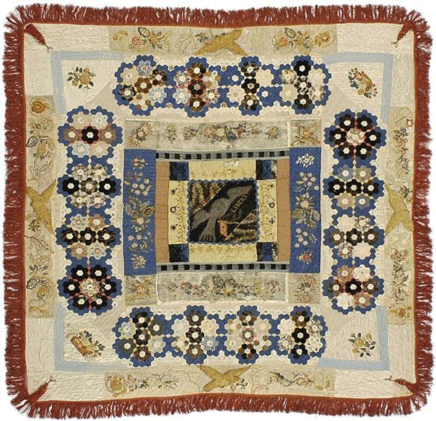
After Keckley’s success with working in Washington, D.C., she spent the remainder of her life as a sewing instructor and director of Domestic Art at Wilberforce University, a historically black university.
Not only did quilting help provide community and independence, Black and white women also utilized their quilting skills to create positive reform in the mid to late 19th century. Their quilts were sold at various events to provide funds for the Underground Railroad, anti-slavery newspapers, and other societies. The quilters also issued 250,000 quilts and comforters to the Union soldiers during the American Civil War. Quiltmaking was a significant part of the work accomplished to abolishing slavery in the United States in 1865.
The Underground Railroad ran for 30 years as a system used by enslaved African Americans to make the harrowing journey towards freedom. Harriet Tubman created the Underground Railroad after she escaped from slavery in 1849. Tubman was born into slavery in Dorchester County, Maryland, in the 1820s. Quilting was a large part of the community in the life of slavery, so Tubman also was a quilter. She applied her quilting knowledge to create secret codes to guide slaves to freedom through the Underground Railroad. During slavery in the United States, it was a law that slaves were not allowed to be taught to read or write; consequently, this made the passing of directions challenging when escaping. Tubman, possibly inspired by traditional cloths from West African societies, decided to use quilting patterns as codes for slaves to memorize as directions.
In Hidden in Plain View: A Secret Story of Quilts and the Underground Railroad, Jacqueline L. Tobin and Raymond G. Doband refer to African American quilts as a “fabric griot.” A “griot” is a West African historian, storyteller, praiser, singer, poet, or musician. The griot uses oral tradition based on memory to keep a record of their society’s history. They keep objects like staffs, tapestries, and stools that are decorated with imagery that act as mnemonic devices for them to recall the history but only they can interpret the designs; however, they train future generations to decipher. Moreover, members of various societies in West Africa use designed textiles to offer the wearer protection and declare what group they belong to. For instance, the “Adire cloth consists of blue-on-blue geometric designs made by the Yoruba people of Nigeria using the resist dye method” . The design is a code ensuring only those who know what the geometric design exactly means (other than that, they are of the Yoruba people) wear the Adire cloth.
According to historians, the Underground Railroad’s quilts may have been inspired by these cultural traditions from West Africa. A quilt is created with stitches and sometimes decorated with ties, knots, and geometric patterns; each element meant something to those in the Underground Railroad. Knots, geometric patterns, and colour all connotated different directions and warnings.. Ozella McDaniel Williams from Charleston, South Carolina, was an African American storyteller or griot. In 1996 Ozella sat down with Jacqueline Tobin and revealed the code used by her ancestors to direct slaves on the Underground Railroad; however, she did not interpret the code. She simply finished with, “you will get the story when you are ready.” Quilt patterns (including designs popularly used for decoration in the present-day) are included in the code. “The code confirms the use of quilts as visual maps to freedom. Forging a link between the past and present, between Africa and America, between blacks and whites, and a route from the South to the North. With the telling comes the responsibility to honour these African American ancestors, not just as slaves but also as masters of their own destiny” .
Post Civil War, African American made quilts continued to carry powerful messages and stories; however, the messages no longer needed to be hidden. Moreover, the significance of the quilts to the women who make them persisted. Gee’s Bend, Alabama is a noteworthy community of African American quilt makers. The community of Gee’s Bend are descendents from the slaves on the Pettway Plantation. Shortly after the American Civil War, the Pettway Plantation slaves were freed; however, they chose to stay where they were, take the surname “Pettway” and turn the slave quarters of the plantation into a small town. The families in Gee’s Bend were tenant farmers and rented their farms (Rubin 85). Unfortunately, the family they rented from drained them of money creating deep debt and stark poverty. During this time the women of Gee’s Bend continued to quilt to support their families.
From watching their mothers, aunts, and grandmothers, quilting was passed down as a craft through the generations at Gee’s Bend. African American quilts are known for their striking colors, abstract designs, strip-piecing, and storytelling. Many of the Gee’s Bend quilts were made from old clothes aiding in the voice and expression of the makers. For instance, in The Quilts of Gee’s Bend by Susan Goldman Rubin, Mary Lee Bendolph, a Gee’s Bend quilter says, “Old clothes carry something with them...you can feel the presence of the person who used to wear them. It has a spirit in them.”
Although slavery was abolished in mid-20th cenury America, black Americans did not yet have the right to vote. Quilters from Gee’s Bend, Alabama were a part of the fight similar to the involvement in the fight for freedom from slavery. Black Americans in Alabama who wanted to vote at the time had to take an extremely challenging “literacy test” and pay poll tax in order to register to vote; moreover, many who registered lost their jobs to white farmers who wanted to maintain segregation . Consequently, quilters began speaking out through their work. For example, Irene Williams made an inspiring quilt decorated with red, white, and blue fabric that contained pieces printed with the word “VOTE”.
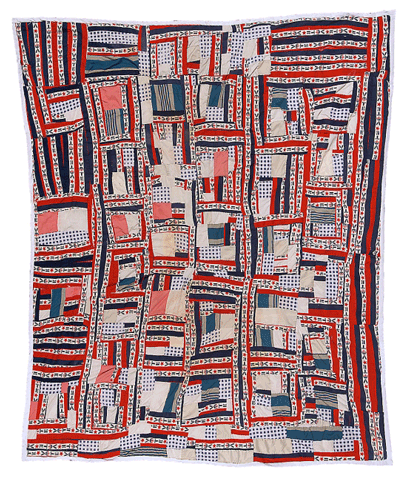
Shortly after, Dr. Martin Luther King visited Gee’s Bend and encouraged the community to march to Camden and demand the right to vote in Wilcox County, an all-white town (Rubin 186).
In the 1960s Father Walter visited Gee’s Bend, Alabama. As he walked through the town, it was laundry day. According to the women of the community, on laundry day the town looked like a museum (Rubin). The bold quilts hung from clotheslines drying in the sun, the sight astonished Father Walter. “Boy, you could see [the quilts] a good ways off the highway. And they was beautiful and they had such a radiant color to them...a color that would just take your attention away...just have you amazed” (Rubin 218).

Father Walters was inspired and bought quilts to send to New York City and sell--all proceeds went back to the Gee’s Bend Community. In 1966, sixty quilt makers met with Father Walters in Camden, Alabama and created the Freedom Quilting Bee (Rubin 218). This was the first black-owned business in Wilcox County. The Gee’s Bend quilts began spreading throughout the art world, and Lee Krasner, painter and wife of Jackson Pollock, visited Gee’s Bend to observe how the quilts were made and buy several for herself. The women quilters of Gee’s Bend helped usher in a new age of art where black American artwork became a large part of the Western art world. Today, African American quilts from the 20th century are hung in museums around the country telling stories of the black experience. Quilts made by slaves in the 19th century exist but certain patterns like the log cabin style are harder to find because they were considered everyday pieces and went through tougher wear and tear.
African American quilts have a rich history; however, the work persists. Today, artists like Stephen Towns are continuing the black tradition of using quilts as a place for storytelling. For instance, Towns has a series of story quilts narrating the life of Nat Turner and his 1831 slave rebellion. From his birth to his rebellion and marriage, Towns tells the story of a significant figure in the history of Black Americans.
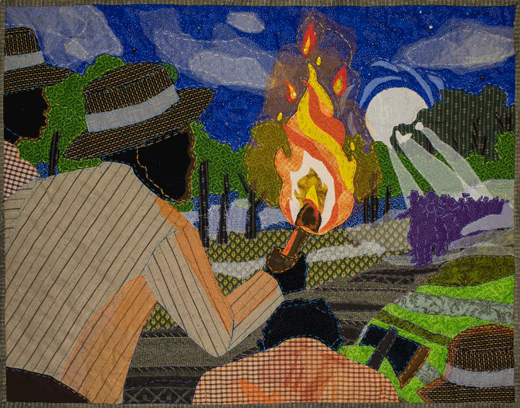
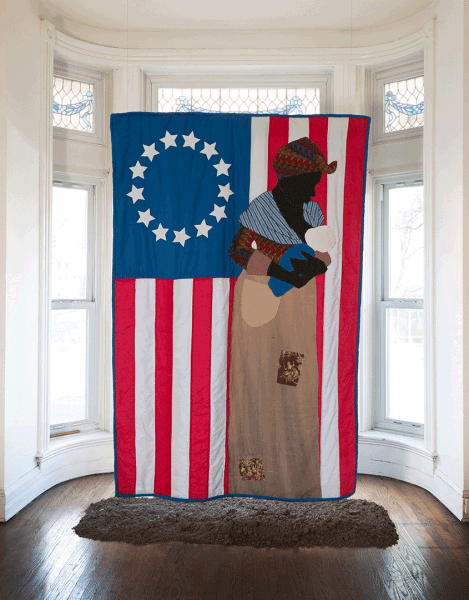
In addition to storytelling, the community and activist portion of quilt making continues. A black women led quilters bee non-profit called “Brown Sugar Stitchers Quilt Guild” (BSSQG) has been running for over 20 years. The guild has monthly meetings where the artists come together and display their personal work. They work to raise money for local charities and donate hundreds of quilts to the children at the Carrie Steele-Pitts Home, a youth home that provides warmth, safety, and a nurturing space for the most vulnerable children in the Atlanta, Georgia area. Moreover, they are active on their Instagram page:
During the recent United States presidential election, the state of Georgia played a large part in President-Elect Biden’s win. The BSSQG used their social media following to encourage Georgians to vote in the election, and posted useful resources and images of inspiring civic duty themed quilts made by the guild.
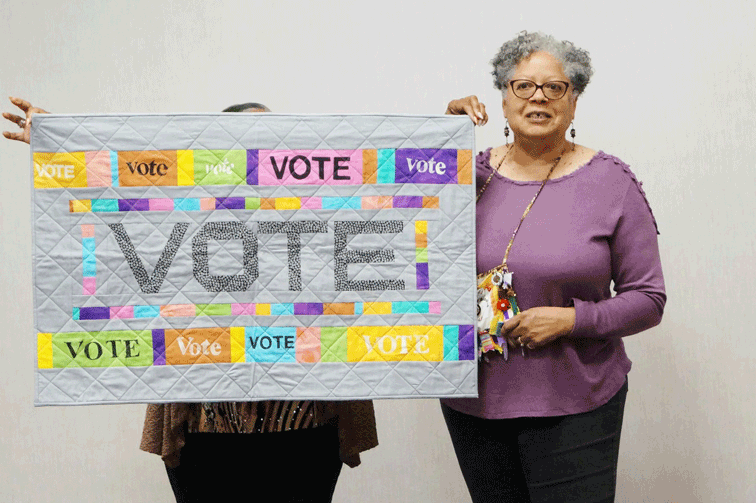
The story of African American quilts is not an easy one to tell, for each quilt is its own brilliant story and each one deserves a platform. Black quilters have worked over centuries to communicate through stitches. The intentional designs indicate codes of freedom and whispers of past traditions, the bold color choices harmonize with the dedicated knots and stitches. Piecing the fabric together, stitch by stitch, each quilt is an individual like its maker. Each piece helps bring together a larger picture of history.
